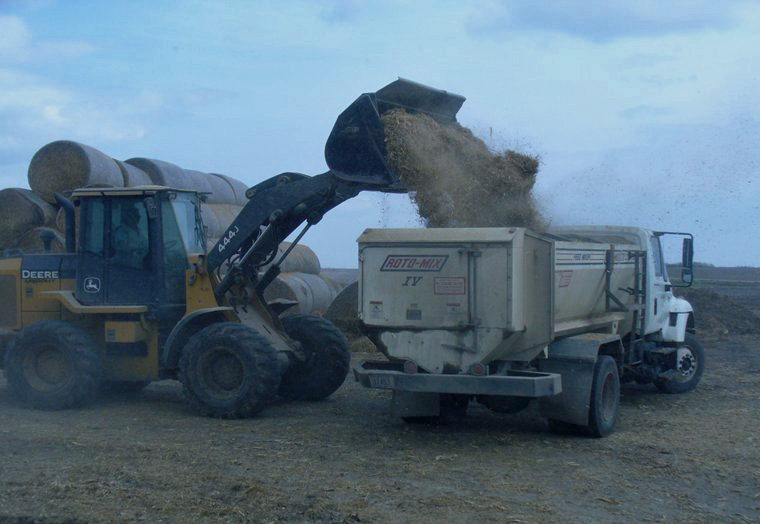
By Matt Luebbe and Galen Erickson, UNL Feedlot Extension
Many producers are searching for alternatives to replace high priced feed again this year. Recently, research is being conducted at several Universities to determine the feasibility and effectiveness of treating crop residues with calcium oxide or calcium hydroxide in diets that include wet distillers grains. The process of using chemical treatment was adapted from paper making technology in the 1880’s. To improve the digestibility of forages this process was further refined in the 1970’s for livestock feeding. Over the last three years a series of experiments were conducted at UNL to evaluate chemically treating crop residues with calcium oxide to increase fiber digestibility. To treat forages with calcium oxide, the ground residue is weighed into the feedtruck and water is added to reach a 50% DM final product. The calcium oxide is added to the residue at 5% of the mixture on a dry matter basis. A more detailed explanation of this process and history of chemical treatment can be viewed at an existing webinar. http://beef.unl.edu/web/beef/treatment-cropresidues
A total of seven finishing research trials were conducted where 10 to 15 percentage units (dry matter) of treated residue replaced corn grain. All diets consisted of corn grain (36-50%), wet distillers grains (35-40%), treated or untreated residue, and supplement. This greater amount of wet distillers grains was used because there appears to be synergy when including distillers grains with higher amounts of forage. Feeding higher amounts of corn grain that mostly consists of starch reduces fiber digestibility. However, when substituting distillers grains for corn, the byproduct provides energy that is not based on starch and fiber digestion is not depressed to the same extent. In five of the seven experiments, replacing 10-15% corn with treated residues resulted in the same feed efficiency as cattle that were fed a control diet that included 5% untreated reside. There were two experiments that showed about a 5% poorer feed efficiency when the treated residue was fed. Both of these experiments were conducted during the summer with yearling steers while the other studies were conducted in the fall and winter using calf-fed steers. We are interested in determining why there may be a difference based on cattle type or season in the future. Several of these experiments are published in the Nebraska Beef Report http://beef.unl.edu/reports
Keep in mind that when corn is expensive and residues are relatively inexpensive, a small reduction in feed efficiency may not translate into reduced profitability. As markets change for different commodities the economic advantages to treating residue change. Currently, the price of corn is lower than it was last year and the price of residue is remaining strong, in this scenario there appears to be little to no economic benefit to chemical treatment. Producers should always consider overall profitability instead of only considering the least cost of gain or maximum feed efficiency.
Currently, UNL has two experiments completed using calcium oxide treated forages in growing diets. The results of including treated forages in growing diets are not as favorable as the finishing diets. Growing steers consumed more feed due to increased digestibility when treated residue is fed, thus allowing for more intake when gut fill limits intake in forage-based diets. Cattle also gained more due to increased intake; however, feed efficiency was only slightly improved.
Because feedlots are able to replace high priced corn with roughage it was economically favorable last year. However, in growing diets other roughage sources (hay or residues) are typically replaced and this replacement is not as economically favorable as replacing corn grain that is often two and one half to three times the price of roughage. At this time we do not have data to support the use of chemically treated residues in high forage diets based on cost.
Adding calcium oxide or calcium hydroxide with water is a chemical reaction that can produce heat if not mixed in the proper amounts. Caution should be exercised when treating forages. Inhalation or physical exposure to the skin or eyes with calcium oxide should be avoided and personal protection should be used. Please contact an Extension Educator or Specialist before treating forages for more details on safety and correct procedures to ensure safety and gaining the most benefit from treating forages.
An additional webinar described more up-to-date information on June 18th. This along with other timely topics can be accessed on the UNL beef website at: http://beef.unl.edu/beefwebinars.